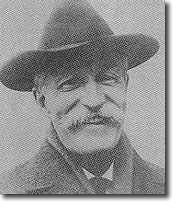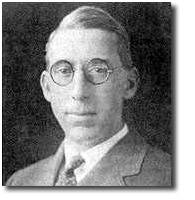|
Stories
|
|
The 1910 Fire Eyewitness accounts from 1910 Fire Was the 1910 fire the largest? A Clash of Titans Relations of Forests & Forest Fires Could the 1910 fire happen again? |
 "And now, first and foremost, you can never afford to forget for one moment what is the object of our forest policy. That object is not to preserve the forests because they are beautiful, though that is good in itself, nor because they are refuges for the wild creatures of the wilderness, though that, too, is good in itself, but the primary object of our forest policy, as of the land policy of the United States, is the making of prosperous homes. It is part of the traditional policy of home making in our country. Every other consideration comes as secondary... You yourselves have got to keep this practical object before your minds; to remember that a forest which contributes nothing to the wealth, progress or safety of the country is of no interest to the Government, and should be of little interest to the forester. Your attention must be directed to the preservation of the forests, not as an end in itself, but as a means of preserving and increasing the prosperity of the nation."
"And now, first and foremost, you can never afford to forget for one moment what is the object of our forest policy. That object is not to preserve the forests because they are beautiful, though that is good in itself, nor because they are refuges for the wild creatures of the wilderness, though that, too, is good in itself, but the primary object of our forest policy, as of the land policy of the United States, is the making of prosperous homes. It is part of the traditional policy of home making in our country. Every other consideration comes as secondary... You yourselves have got to keep this practical object before your minds; to remember that a forest which contributes nothing to the wealth, progress or safety of the country is of no interest to the Government, and should be of little interest to the forester. Your attention must be directed to the preservation of the forests, not as an end in itself, but as a means of preserving and increasing the prosperity of the nation."
 For the young Forest Service, the 1910 fire added insult to injury. Earlier that year, Gifford Pinchot had been dismissed from his post by none other than the president of the United States, William Howard Taft. The president fired Pinchot for publicly castigating Secretary of Interior Richard Ballinger, for his role in what Pinchot thought was a fraudulent coal deal involving public lands in Alaska. Pinchot's departure left the Forest Service without its guiding spirit. His absence together with the 1910 fire had much to do with the agency's decision to declare war on fire.
For the young Forest Service, the 1910 fire added insult to injury. Earlier that year, Gifford Pinchot had been dismissed from his post by none other than the president of the United States, William Howard Taft. The president fired Pinchot for publicly castigating Secretary of Interior Richard Ballinger, for his role in what Pinchot thought was a fraudulent coal deal involving public lands in Alaska. Pinchot's departure left the Forest Service without its guiding spirit. His absence together with the 1910 fire had much to do with the agency's decision to declare war on fire.